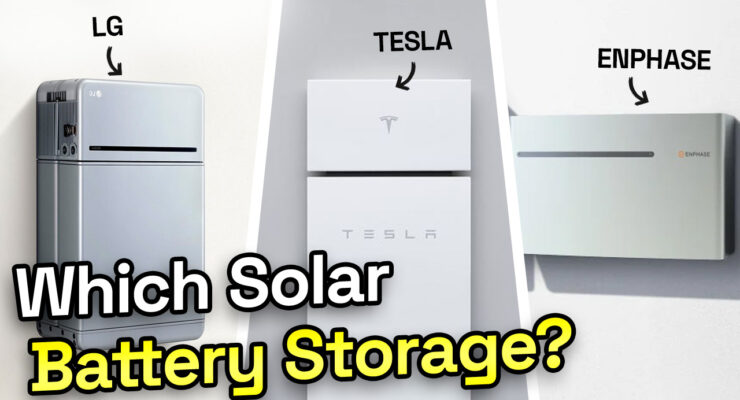Fast read
To determine the appropriate battery backup for your solar system, consider the frequency and duration of power outages in your area, the appliances that need to be powered during an outage, and any critical power needs.
There are various levels of backup support available, ranging from no backup to full home backup, with each offering different capabilities and costs. Consider whether load shifting to cover night-time and peak usage during the day is sufficient or if more extensive backup support is necessary.
Understanding the limitations and capabilities of different battery options is essential to choose the best choice for your needs and budget.
What should I look for in solar battery backup?
It seems logical that if you include or add a solar battery to your solar system, you will automatically have access to backup power in the case of a blackout.
But this is not always the case. There are several levels of backup capacity and capabilities available on the market. Assuming it will all work as you imagined will be the first step to stuff up.
So it is essential to understand what you need and will get from different battery options.
The higher level of backup protection will add cost to the battery, so determining what you need or want is essential to achieve a realistic budget.
The questions that you could consider are:
How often do we have blackouts?
The more regularly you experience blackouts, the more important that backup power will be to you. On the other hand, if you rarely have blackouts, backup capacity may not be that important. Instead, being able to reuse your solar energy during the night via the battery might be the key consideration.
How long do blackouts last when they occur?
The longer the local blackouts run, the more important a sophisticated backup power will be.
What appliances need to be powered through a blackout?
Usually, this would be important appliances like the fridge, key lighting, and a few power points that would power things like a modem, laptop/ computer, fan, etc.
The more appliances that need to run, the more power you will need from your batteries, and the bigger the battery bank might need.
Based on how long and how often you have blackouts. It is worth considering whether you really “need” those appliances during the blackout. For example, the spa bath might not need to be part of the backup, as the more power you require, the more expensive the battery becomes.

Do you have any critical power needs?
Examples would be medical equipment, water pumps in a bushfire area, or computer servers requiring an Uninterrupted Power Supply (UPS). Unfortunately, any batteries offer this, so insist on UPS capacity specifically if required.
There are multiple levels and types of backup power offered from solar batteries on the market. So it is important to understand the differences to check what you are being offered.
The higher level of backup functionality can cost $1000 more due to added electronics and the complexity of the equipment. The various levels of backup support can be categorised as below:
No solar battery backup
These battery options do not operate when there is a blackout. The batteries will only operate when the home is connected to the grid. These batteries are fine if all you want to do is load shift your power to cover night-time usage and peak usage during the day. However, it will not work if no control is available from the grid.
Limited solar battery backup (Single power point)
These batteries will offer power to a single power point. Therefore, the single PowerPoint option will power only one appliance. Such as a fridge, modem, etc, or whatever you can power off this limited supply.
Limited solar battery backup (Single circuit)
These battery solutions will power up to 3kw of load and require or is recommended to have a dedicated backup circuit configured so that all the appliances/ lights etc., are connected to one circuit in the house.
Full home solar battery backup
A few battery brands offer the capacity to back up the whole house. Usually, these will power 5kW of house load, and sometimes if you go for the top-of-the-line solutions – even more.
While they say they can power the whole house, typically, this means that you do not have to have a dedicated circuit in the house for the appliances that want to be backed up, but all circuits in the home will have the capacity to run.
It is worth noting that in this scenario, the house might still have a limited capacity if you turn all appliances on simultaneously. So in a blackout, even with this solution, try to avoid running energy-guzzling appliances such as air conditioning, ovens, toasters, hair dryers, etc. Too much consecutive load can cause the power to trip due to overload, or the battery will drain quickly.
Panels charging the solar batteries during a blackout
Most of you will consider this standard if you have a backup from your battery. However, it is not. Some of the batteries on the market cannot be charged from the panels during a blackout. This capability requires additional complexity in electronics, firmware, and safety elements.
Being able to charge your batteries from the panels during a blackout is, of course, very desirable, as it will increase your ability to power the home during extended blackouts potentially indefinitely.,
This can be valuable, particularly to those who live in bushfire and flood-prone areas.
